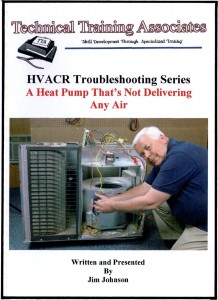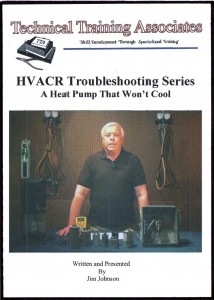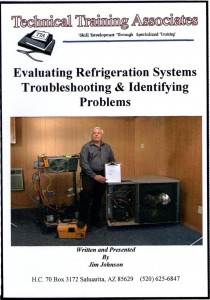Bob is a service technician who is well trained and nationally certified. However, he has sometimes suffered from the same confusion that all technicians occasionally do — the facts that he gathers may or may not point to the obvious cause of the problem or the best solution. But Bob has had something that no one else has. He recalled his long-time HVACR mentor and imagines him accompanying him as “Btu Buddy,” someone who reminded him to take time to stop and think before rushing to judgment, helping keep him on the right track, even with facts that are confusing.
Now, Bob’s company has promoted him to help train a new employee, right out of a school specializing in HVAC, just like Bob was. Bob is now Tim’s Btu Buddy. Tim is anxious to travel with Bob. Tim realizes that he is right out of school, with the theory and lab work that he accomplished in school, but still needs help. He knows that he worked with many of the components of the systems in the school, under ideal conditions with good light and air conditioning. Now it is into the field, sometimes under the house with poor lighting, or out on the rooftop in the sun, where the real action is. He is naturally and normally reluctant, but he has Bob to help guide him.
Bob and Tim were called to a heat pump problem where the homeowner said the unit was icing up in her basement. When they arrived, the housewife met them at the door and took them down to the basement and said, “This is not normal. I have never seen ice down here on these lines before.”
Bob assured her that they would get to the bottom of what was going on, but it sure enough was not normal.
Bob turned to Tim and asked, “What do you think is wrong with the system, Tim?”
Tim said, “I have no idea. I have never seen anything like this before. That line should always contain liquid and never freeze. The unit is in the heating cycle, but the frost starts at the metering device for the indoor coil. Liquid should be flowing away from the indoor coil towards the outdoor coil in the heating cycle (Figure 1).”
Bob then asked, “What is normally happening when you start getting frosting on a line like that. Like you said it is a liquid line and should always be warm, but it is frosting. What could cause that?”
Tim said, “I would say that the liquid is flashing to a vapor where the frosting is taking place. It is acting like an evaporator, not a liquid line. There must be a restriction in the liquid flow at that point. This system is about a year old so my guess is we should recover the refrigerant and open up the system at the liquid line connection there at the indoor expansion device.”
Bob said, “I would say that that was a good guess, but you didn’t sound like you are guessing. That sounds like you knew what you were talking about. What kind of expansion device does the system have for the indoor coil?”
“It is a fixed bore orifice metering device,” said Tim. “That device should be foolproof, but evidently something is going on inside it and it is not getting full flow as it should.”
Bob said, “Tim, get set up and recover the refrigerant from the system. Then we will open it up and see what’s going on at that point.”
They recovered the refrigerant into a fresh recovery cylinder. They let the system sit for a few minutes so that any residual refrigerant in the system would build enough pressure to allow the system to be above atmospheric pressure.
Bob said, “It looks like there is about 1 psi of pressure in the system. That would be considered the de minimis amount. Now carefully take the metering device apart and watch for falling particles.”
Tim opened up the device holding everything in the palm of his hand and when he had it all he said, “The piston fell out in my hand but also a piece of what looks like glass fell into my hand.”
Bob said, “Quickly put the metering device back together, and tighten it up. Let’s look at that piece that fell out with the piston.”
Tim said, “It looks like a piece of glass. It looks like a flake like you pick up when you drop a glass in the kitchen sink. I cannot imagine what it is.”
Bob said, “That is a flake of flux left over from some process internal to the system from manufacturing. Someone at the manufacturing plant applied flux to the inside of a connection and, when the connection was made, he pushed the flux inside the pipe. When the connection was brazed, the flux was hardened on the inside of the pipe and after a period of running time, vibration and expansion caused it to come loose and flow down the pipe towards the liquid line. It might have even been a piece of flux from when the system was installed in the field. Whatever the reason, it stayed in the system and finally came loose and restricted the metering device.”
Tim asked, “Why didn’t the filter pick up the particle?”
Bob responded, “During the cooling cycle, I would have thought that particle would flow through the coil towards the compressor and fall down in the crankcase. But apparently it either did not get that far or it just broke loose while the flow was coming towards the liquid line. The filter in the liquid line is before the metering device in the cooling cycle and would not have picked it up. The orifice is a combination metering device and check valve. Any particle that large would cause a restriction in liquid flow.”
Tim then asked, “Isn’t this unusual? I have never heard anybody talk of this before.”
Bob said, “Yes, it is unusual. It really makes me wonder where it came from. In manufacturing the people that assemble units are very well trained as to how to apply flux. But somebody made a mistake and allowed some to get into the system. This is like a lot of things that we see in the service industry. We may only see them one time in a lifetime. That’s what makes us think in this business. It is quite a technical field and is not easy; there are always challenges. Let’s go ahead and recharge the system with the refrigerant and make sure that the charge is correct. We took out all of the refrigerant except what residual refrigerant vapor that was still in the system at 1 psi. But we should also get set up and check the charge in the system to make sure that it is correct. It may not have been correct when we came to the job.”
They allowed the original charge from the recovery cylinder back into the system. The refrigerant was clean because the recovery cylinder was fresh and clean. Then following the charging chart with the system, they checked the charge. They had to add about 1 ounce of refrigerant to fully charge the system. The unit was now good to go.
Bob said, “Let’s switch the system over to cooling just to make sure that everything is good in that phase of the operation.”
Tim switched the system over to cooling and all was working correctly. By switching to cooling they were assured that the system would also work correctly in the defrost cycle.
As they were riding away Tim said, “That call didn’t take very much time but it was a head scratcher.”
Publication date: 11/23/2015
Want more HVAC industry news and information? Join The NEWS on Facebook, Twitter, and LinkedIn today!











